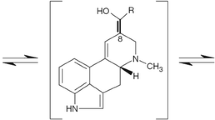Abstract.
A total of 16 hens were allocated to two groups. Hens were kept individually in a cage battery. During a four-week experiment 120 g feed were given per hen and day of consumption. The diet consisted of commercial potato meal (50%) as well as soy meal, barley and premix. The potato meal for the experimental group was heated for 2 h at 150°C. While the determined acrylamide content in the experimental diet was 671 ± 32 μg per kg, it was 125 ± 40 μg/kg in the diet of the control group. Acrylamide was determined by gas chromatography – mass spectrometry in the diet as well as in body tissue and eggs.
During the experiment the acrylamide concentration in the eggs increased in both, the experimental and the control group. After three weeks, the acrylamide concentration in the eggs remained constant (max. 17.2 μg/kg egg). The carry-over rates for acrylamide from the diet to the egg were 0.022 in experimental and 0.010 in control hens. All hens were slaughtered at the end of the trial. The highest content of acrylamide was found in the kidneys of the experimental hens (27.7 μg/kg). It may be concluded that even for the highest acrylamide concentration considered the contribution of poultry products to the total acrylamide intake by humans is low.
Zusammenfassung.
16 Legehybriden (LSL) wurden in 2 Gruppen aufgeteilt und in Einzelhaltung untergebracht. Die Hennen erhielten über vier Wochen täglich 120 g Futter. Die Futtermischung setzte sich aus 50% eines küchenfertigen, handelsüblichen Kartoffelpulvers sowie Sojaextraktionsschrot, Gerste und einem Prämix zusammen. Das Kartoffelmehl der Versuchsgruppe wurde bei 150°C 2 h lang geröstet. Die fertige Futtermischung der Versuchsgruppe enthielt 671 ± 32 μg Acrylamid/kg Futter und die Mischung der Kontrollgruppe 125 ± 40 μg/kg. Der Gehalt an freiem, unkonjugiertem Acrylamid in den Proben und im Futter wurde mittels GC-MS untersucht.
Im Versuchsverlauf stieg in den Eiern der Hennen beider Gruppen die Acrylamidkonzentration an. Nach einer dreiwöchigen Versuchsdauer änderten sich die Konzentrationen an Acrylamid im Ei nicht mehr (max. Konzentration: 17,2 μg/kg Eimasse). Die Carry-over – Faktoren für Acrylamid vom Futter ins Ei betrugen bei den Kontroll- bzw. Versuchstieren 0,022 bzw. 0,011. Die höchste Acrylamid-Konzentration wurde in den Nieren der Tiere der Versuchsgruppe ermittelt (27,7 μg/kg). Selbst unter Berücksichtigung der höchsten Acrylamidkonzentrationen ist der Beitrag der Geflügelprodukte an der gesamten Acrylamidaufnahme des Menschen gering.
Similar content being viewed by others
Author information
Authors and Affiliations
Corresponding author
Rights and permissions
About this article
Cite this article
Halle, I., Ihling, M., Lahrssen-Wiederholt, M. et al. Carry-over of Acrylamide from Feed (Heated Potato Product) to Eggs and Body Tissues of Laying Hens. J. Verbr. Lebensm. 1, 290–293 (2006). https://doi.org/10.1007/s00003-006-0050-1
Received:
Published:
Issue Date:
DOI: https://doi.org/10.1007/s00003-006-0050-1




